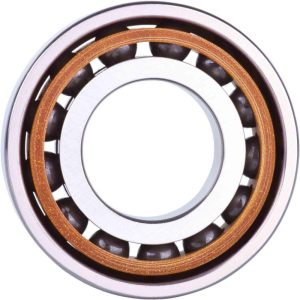Introduction to Bearings
Bearings play a pivotal role in reducing friction between moving parts in machinery. They come in various types, each designed for specific applications and operating conditions.
Sealed Type Bearings
Sealed Type Bearings, as the name implies, have seals to protect the inner components from external contaminants. This design significantly enhances the bearing’s lifespan and reliability.
Benefits of Sealed Type Bearings
- Extended Lifespan: The seal prevents the ingress of dust, dirt, and moisture, which can deteriorate the bearing’s internal parts.
- Reduced Maintenance: Sealed bearings require less maintenance as they are less likely to get contaminated.
- Cost-Effectiveness: While the initial cost might be higher, the long-term savings in maintenance and replacement costs make them cost-effective.
- Improved Efficiency: By keeping contaminants out, these bearings maintain their lubrication and efficiency for longer periods.
Sealed Type bearings are especially useful in environments where dirt, dust, and moisture are prevalent.
Open Type Bearings
Open Type Bearings do not have seals, making them more suitable for environments where they are less likely to be exposed to harmful contaminants.
Benefits of Open Type Bearings
- Ease of Maintenance: Open bearings are easier to clean and re-lubricate.
- Lower Initial Cost: They are generally cheaper than sealed bearings.
- Adaptability: Suitable for high-temperature environments where seals might degrade.

Comparing Sealed and Open Type Bearings
Cost Implications
- Initial Purchase: Open type bearings are more affordable upfront.
- Long-Term Expenses: Sealed bearings can be more economical due to lower maintenance costs.
Performance and Efficiency
- Lifespan: Sealed bearings typically have a longer lifespan due to better protection.
- Efficiency: Sealed bearings maintain lubrication better, leading to higher efficiency in the long run.
Application Specifics
- Dimensions and Specifications: The choice depends on the specific requirements of the machinery, such as load capacity and speed.
- Material Quality: Both types come in a variety of materials, each offering different strengths and weaknesses.
Drawbacks
- Sealed Type: Higher initial cost and potentially lower cooling efficiency due to the seal.
- Open Type: More susceptible to contamination, which can reduce lifespan and efficiency.